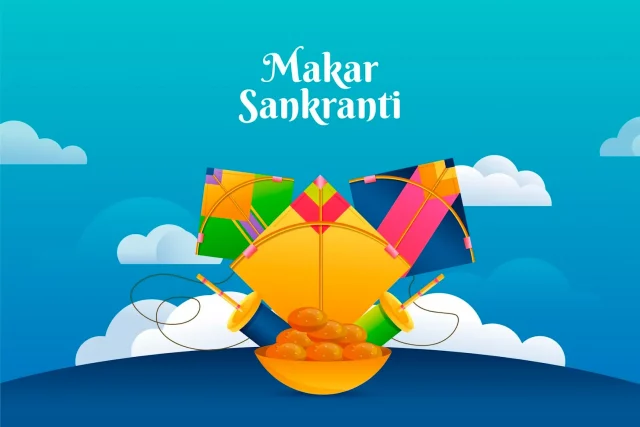Makar Sankranti, an auspicious festival celebrated across India, marks the transition of the sun into the zodiac sign of Capricorn. Beyond its religious significance, the festival is synonymous with the exhilarating Kite Festival, a tradition that brings people together, soaring high in the sky. Let’s explore the cultural roots and the joyous spirit of the Makar Sankranti Kite Festival through insights from various sources.
Cultural Roots and Significance:
Makar Sankranti holds a special place in Hindu traditions, symbolizing the end of the winter solstice and the beginning of longer days. This transition is seen as a period of enlightenment, prosperity, and new beginnings. The festival is celebrated with diverse rituals across the country, including taking holy dips in rivers and enjoying festive meals. One of the most vibrant and thrilling aspects of Makar Sankranti is the Kite Festival.
The Joyous Tradition of Kite Flying:
The tradition of flying kites during Makar Sankranti is deeply rooted in Indian culture, signifying the victory of light over darkness. As per the old tradition and belief, the act of flying kites is believed to bring good luck and prosperity. The sky transforms into a riot of colors as people of all ages gather on rooftops and open spaces, launching kites with skill and enthusiasm. The sound of “Woh Kata!” (I cut!) fills the air as participants engage in friendly competitions to cut each other’s strings.
Le’s shed light on the craftsmanship involved in kite making, a prelude to the grand Kite Festival. Kites are crafted from a variety of materials, including paper, bamboo, and threads coated with a special mixture of glue and crushed glass to enhance their cutting ability. Skilled artisans showcase their talent by creating intricate designs and shapes, turning each kite into a work of art.
Regional Variations and Celebrations:
Makar Sankranti is celebrated with varying customs and traditions across different states of India. With many regional variations in the Kite Festival, Gujarat’s International Kite Festival is one of the most famous. In Gujarat, the sky becomes a canvas for unique and colossal kites, and the festival attracts participants and enthusiasts from around the world. In other states like Rajasthan and Maharashtra, the Kite Festival is celebrated with equal fervor, each region adding its unique touch to the festivities.
Beyond the competitive aspect, the Kite Festival fosters a sense of community bonding and togetherness. Families and friends come together on terraces and open fields, sharing traditional sweets like sesame seed and jaggery laddoos. The vibrant kites, soaring high against the backdrop of the clear winter sky, create a festive atmosphere filled with laughter, cheers, and camaraderie.
Makar Sankranti’s Kite Festival is not just a celebration of the changing seasons; it’s a cultural phenomenon that binds communities together in the spirit of joy and festivity. As kites dance in the sky, carrying with them the hopes and aspirations of the people, the festival becomes a testament to the rich tapestry of traditions that define India. Soaring high with tradition, the Makar Sankranti Kite Festival continues to be a mesmerizing spectacle that unites people and brings a sense of exhilaration to the winter skies.












































